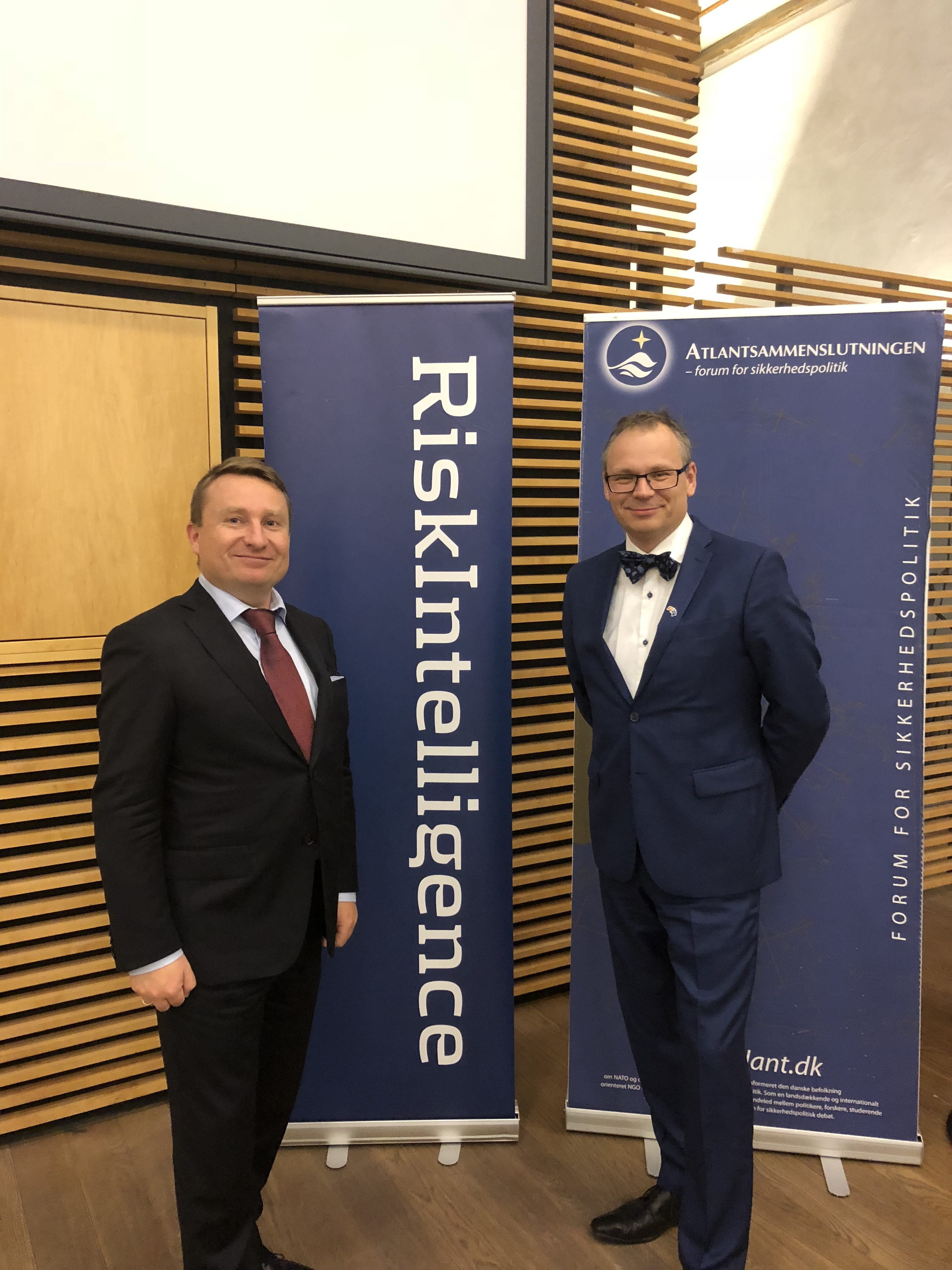By Robbin Laird
A recent conference sponsored by our partner Risk Intelligence and hosted by the Atlantic Danish Atlantic Treaty Organization focused on “Threat Perception 2018: The Northern European Perspective.”
In effect, the focus of the conference was the nature of the challenges and ways ahead to provide for direct defense of the region against the Russian state.
After the conference, I had a chance to talk with the head of Risk Intelligence, Hans Tino Hansen, and to get his perspectives on the conference and the challenges and ways ahead facing the region.
We started with regard to how best to characterize the challenge.
The head of Risk Intelligence underscored that we need to state clearly what the nature of the challenge posed by a Russia or China actually is and to make sure that we do not fall into Cold War thinking and blur the distinctions between the Soviet Union and the Warsaw Pact, on the one hand, with today’s Russia, on the other.
While we should take the threat seriously, we should not at the same time adapt countermeasures that do not fit the present situation.
“Russia is a major regional power; it is not a global superpower, and does not have the means to impact military, politically and economically globally.”
He then argued that we need as well to focus on the shift in strategic geography.
While the Warsaw Pact surrounded the Northern Tier of NATO, the expanded geography with the emergence of the Arctic region and the expansion of Russian capabilities in the region are the focal point.
“We need to look at the Arctic Northern European area, Baltic area, as one.
“We need to connect the dots from Greenland to Poland or Lithuania and everything in between.
“We need to look at the area as an integrated geography, which we didn’t do during the Cold War.
“In the Cold War, we were also used to the Soviet Union and the Warsaw Pact being able to actually attack on all fronts at the same time, which the Russians wouldn’t today because they are not the power that they used to be.
“And clearly we need to look beyond the defense of the Baltic region to get the bigger connectivity picture.”
“NATO is also not what it used to be as well.
“We clearly need to rethink and rebuild infrastructure and forces to deal with the strategic geography which now defines the Russian challenge and the capabilities they have within that geography to threaten our interests and our forces.”
“We need to evaluate the threats across a spectrum of conflict, that is also what is so different today compared to the Cold War.
“We clearly need to enhance our force structure to be able to do classic direct defense as this is key to credible deterrence.
“But now we face a range of threats in the so-called gray area which define key aspects of the spectrum of conflict which need to be dealt with or deterred.”
We then discussed the key challenge of reshaping civil structures that actually can address crisis management of the sort necessary to deal with the wider spectrum of Russian tools as well.
For this we need a system of crisis identification and to establish robust procedures for crisis management.
“A crisis can be different levels.
“It can be local, it can be regional, it can be global and it might even be in the cyber domain and independent of geography.
“And, we need to make sure that the politicians are not only able to deal with the global ones but can actually also react to something lesser.
“Who knows when a crisis is a crisis?
“Is it when X amount of infrastructure has been attacked by cyber-attacks?
“Is it when X amount of public utilities have been disrupted and for how long that defines the nature of a crisis?
“This certainly calls for systems and sensors/analysis to identify when an incident, or a series of incidents, amount to a crisis”.
“Ultimately, that means that the politicians need to be also trained in the procedures necessary in a crisis similar to what we did in the WINTEX exercises during the old days during the Cold War where they learned to operate and identify and make decisions in such a challenging environment”.
We focused finally on the importance of building robust infrastructure as part of the direct defense challenge which a Russia armed with a range of new tools to attack Danish and Northern European civilian infrastructure as a prelude to or the key focus of a direct military threat.
“The final deterrence is nuclear. But if we move one step prior to that, then we’re talking about direct defense.
“That encompasses defense of geographical areas, defense of sea lanes of communication, defense of the logistics chains that connect the NATO countries.
“But direct also encompasses the defense of the industries of the NATO countries.
“That is just as important.
“And deterrence has to be credible in the eyes of the adversary.
“We need to study, and to understand what would be credible to the Russian leadership in terms of our responses and our capabilities.
“It boils down to determining what are the nature of the crises with which we need to deal with a force on force confrontation and how to prevail in such crises.
“And to do so with an understanding of the expanded notion of direct defense.”
The featured photo is of the head of Risk Intelligence and of the Atlantic Danish Atlantic Treaty Organization after the conference.
Also, see the following article:


